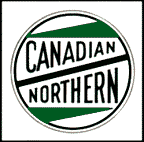My vote - none of them, right now. That map is interesting historically, but we should not plan the infrastructure on the basis of nostalgia.
I agree, I was more thinking of routes or redundancies for which people have advocated in the past where one of these, were the ROW in tact, might prove useful.
Sometimes, something no longer appears useful in the context of a given time, but decades later, new circumstances emerge that might make that conceit worth revisiting.
Just to throw one example out, we've discussed in the past a direct rail connection from Ptbo down to the Oshawa area, given the frequent GO bus traffic between those two points.
I think most of the discussion centred on the 35/115 highway corridor used by buses.
But I noted from
@reaperexpress 's post the old Whitby, Port Perry and Lindsay railway which ran roughly in line with Brock Road in Whitby for the first leg, was relatively straight and ultimately met up with the CP Havelock.
That did have me looking, but it appears that corridor has been lost to time as the southern legs were pulled up as early as the late 30s (90 years ago).
But that was the idea I had in mind, not to ressurect a corridor for nostalgia, but because we might be able to find current utility in it at lower cost that a new build.
However, I would argue that land should be set aside in Municipal and provincial plans for rail corridors.
How is it that we can examine municipal zoning maps and spot any number of planned road and 400-series highway corridors, but absolutely no thought is given to rail corridors? How is it that the MTO even assembles land for highways when iit may be decades until they are built? Or airports.....we've held land in Pickering for what, 50 years now....
Completely agree. I advocated to the MTO for the 413 corridor to be a rail corridor, and to be connected to both the CP and CN mainlines, allowing any traffic to/from the south-west to route that way more efficiently, and it could also support a passenger service as the market dictated.
Failing that, I argued such a corridor (rail) should be included with the highway.
I doubt that the old bridge routes between Buffalo and Detroit matter any more, so I can't see them returning. However.....if you really want to stir the pot....consider a new crossing from the US at either Buffalo or along the St Clair river. If you think the railways scream about interswitching now, add a new railway between the US and southern Ontario. CN/CP's control of tunnels and bridges is all about protection against third-railway competition. It's a hypothetical, but if I were a billionaire with money to invest, a Norm Ullman rail tunnel from Detroit would be a game changer for, say, auto industry traffic..
A great opportunity for government-built and owned infrastructure with contracted operations, such as Guelph Waterloo and others are doing today, thin edge of the wedge towards a different model for mainline railway ownership.
- Paul
An interesting idea, but how would you route the connection deeper into Ontario to serve new/existing plants?
Who are the major U.S. Carriers w/assets there? CSX and Norfolk Southern?





